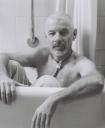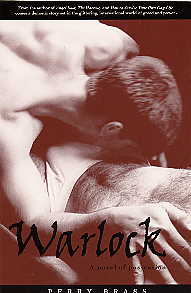Today I read a wonderful entry in Jesse Monteagudo’s email journal that he sends out his friends, and also posts in his own blog, about male public restroom encounters. It really made me think about what is happening here, and why we are so appalled at what has basically been going on since guys got together to pee in the back of the cave. Here’s Jesse’s journal entry, and at the end I include my own response, which I thought was interesting, too.
Sex and the Daytona Beach 9
Male homosexual activity in public bathrooms, for decades a fact of gay life, became big news in 2007, thanks to the misadventures of conservative politicos like U.S. Senator Larry Craig (R-Idaho) and Florida State Representative Bob Allen (R-Merritt Island) and the (mostly unfounded) complaints of Fort Lauderdale Mayor Jim Naugle. Now come the “Daytona Beach 9;” nine men who were arrested for lewd behavior during a sex sting operation at a Sears Department Store bathroom in Daytona Beach Nov. 1. According to the Daytona Beach News-Journal, the accused include “a former Daytona Beach city commissioner and a local high school teacher” who promptly resigned from his job. “The reason that we did this sting is we all go to the mall; our kids go into the bathroom,” said Police Chief Mike Chitwood, who could hardly contain his disgust. “That they could be susceptible to this type of behavior is absolutely a disgrace.” (Please note that I refuse to name the Daytona Beach 9. In my opinion, these men have suffered enough already.)
Public sex, especially sex in public toilets or “tearooms,” has always been controversial, even within our GLBT community. Almost without exception, bathroom sex is male masturbatory or male homosexual, proof perhaps of the male’s greater sex drive. (It is not my intent, in writing this article, to condone bathroom sex. In fact, due to its health, safety and legal hazards, I do not recommend it.) There are many reasons why a man would want to have sex in a public restroom. For some men, bathroom sex is a step in the coming out process; a relatively easy way for them to discover the joys of male love before moving on to gay social networks, commercial institutions, or even a life partner. For other men, tearoom trade is their main or only form of sexual expression. Many of these are repressed “closet cases;” men who can not or will not accept their homo- or bisexuality. For them, a quickie in a toilet satisfies their sexual needs but does not require them to be publicly “branded” as queer, which would be the case if they went to a gay bar, sex club, community center, church, etc. This was apparently the case with Sen. Craig, Rep. Allen, and at least some of the “Daytona Beach 9.”
What makes a public bathroom a hotspot for tearoom sex? Though opinions differ, a bathroom’s location often makes it a favored place for sexual activity. College campuses are ideal tearoom locations, if only because colleges are full of testosterone-charged young men who still question their sexuality. Public parks are also popular (ask George Michael) as well as libraries and department stores (like the Sears in Daytona Beach). Once a place gets a “reputation” there is no telling what might happen. A good example is a Home Depot store in Oakland Park, Florida, which in its heyday was notorious for its men’s room activity. How did that Home Depot become so cruisy? Certainly the store’s butch image attracted a certain type of gay man. Perhaps two guys hit it off at the paint section, went off to do their business in the bathroom, and then told their friends. And the rest is history.
Male homosexual activity, especially in public places, threatens a lot of people, which is why the media have a field day with sex stings like the recent one in Daytona Beach. The Daytona Beach News-Journal’s excited coverage of the Nov. 1 arrests is a case in point. The day after the arrests were made the paper (and its Web site) published an article (“Ex Daytona commissioner, teacher charged in sex sting”) which not only published the names, ages and professions of the accused but also their mug shots. The next day the News-Journal ran a second article (“Mall bathroom sex sting spotlights subculture”) that tried to analyze “a subculture in which adult men meet for sex in restrooms designated online as hot spots, almost in plain view of unsuspecting patrons.” In fact, the only explanation of this “subculture” came from police Sgt. Jeff Hoffman, who talked about “coughing, grunting, sharp zipper noises, … tapping on shoes” and other “signals” used by men to attract sex partners. Though the accused limited their sexual activities to masturbation, they were nevertheless arrested “because a bathroom stall doesn’t completely conceal a person” and, thus, “he has no expectation of privacy, making any sexual behavior unlawful.”
As if that was not enough, the paper followed this tidbit with a third article (“Activists say arrests a setback for gay community”) that claimed that “the entire local gay, lesbian, bisexual and transgender community is going to have a harder time than ever gaining equality and convincing people that only a tiny fraction among them is interested in sex with strangers in public places.” That’s a lot of responsibility to be placed on the shoulders of nine formerly closeted men. Not surprisingly, the News-Journal’s coverage of the arrests “generated more than 120,000 page views and hundreds of comments on the News-Journal’s Web site Friday. That’s more traffic than the entire site gets on a normal day.” Needless to say, most of the comments were even worse than the cops’.
The media justify their lurid reports by protesting that bathroom sex threatens the well-being of “innocent” bystanders, especially children. Leaving aside the question of whether or not witnessing sexual activity is more traumatic than watching a traffic pileup or a Fort Lauderdale City Commission hearing, the fact remains that an unsuspecting child is more likely to be hit by a bolt of lightning or win the lottery than run into sexual activity in a public john (unless he’s looking for it). As any vice cop could tell you, catching men having sex in restrooms is difficult, which is why they often have to resort to entrapment or other extralegal subterfuges. A sting operation like the one in Daytona Beach is newsworthy because it is so unusual.
The media will also deny that they are conducting a witch-hunt against gay or bisexual men. But a witch-hunt it is, and many of our brothers have paid the price for it. Thirty years ago, reporters used hidden cameras to catch men who gathered in gay bars. Today, the media use similar tactics to catch men having sex in public parks or public bathrooms. In fact, today’s accused have it even worse, for they are branded for life thanks to sex offender laws and the Internet. One does not have to condone public sex to agree that media coverage of sex sting operations is often sleazier than any crimes that the stings seek to prevent. We can feel sorry for the accused, which is why we agree with the Rev. Beau McDaniels of Hope Metropolitan Community Church, who “said she can understand why some local gay and bisexual people go underground. It’s a conservative area where people’s sexual preferences can ruin their careers, she said.”
“If people would learn to accept people as God accepts them, we wouldn’t have this issue,” Rev. McDaniels said. “When you’re told it’s wrong and bad, you hide. This will drive us deeper underground.”
I welcome your comments. You may reach me by e-mail at jessemonteagudo@aol.com.
Dear Jesse,
That was a great journal entry. I really enjoyed it, and thought it was marvelously written, very clear, mostly dispassionate, and “spot on,” as the kids say.
Most gay men who’ve had any experience and fairness out in the world don’t condemn bathroom sex; they may not like it, but to outright condemn it because “I’d never do it,” seems pretty ridiculous. It’s been going on since the early 19th century, at least, when public facilities became available. In fact, one famous “house of comfort” in Central Park was visited by Walt Whitman, and was notorious after the Civil War as a place to meet soldiers, sailors, workers, and other “tradesmen.” In England, it was very popular, especially during Edwardian times, and these places were referred to as “cottages,” so it was called “cottaging.” Since England had ferocious laws about picking up anyone in a bar (constant entrapment), the “cottages” were considered safer. Usually what went on there was not complete sex, just a dangling of equipment, a few winks, and then something was done outside. Although that was not always the case.
A lot of the uproar about bathroom sex, or tearoom sex, really comes from the feminization of our commercial culture. Women, back in the 19th century, were pretty much aghast at the idea of public facilities. They were things men used. Women did not use them; they used facilities in hotels or lady’s shops, if they had to “go” outside the house. Usually, they just held it in, so that women often suffered from terrible bladder problems. But it was considered unladylike to go to do “it” in a place open to the public, so the idea of one of these places being used for sexual as well as excretionary purposes was really disgusting to the WCTU crowd. Men usually laughed at what was going on. It was often considered simply a part of being a man, and the Paris pissoirs were infamous cruising places, and no one ever got busted in one. It would have been considered, in itself, a breach of privacy and manliness. If you did not want the advances of a man, you just let him know and pronto!
I think this attitude was pretty much in force in America, even up until after World War II, when public facilities really started opening up, and women started using them as well. So the old feminine disgust at anything else going on in these places except an “extremely private function,” snowballed. For women, the public bathroom was a place for primping, and anything other than that was totally locked up, with an attendant out in front to make sure it stayed that way. Since no real man ever primped, it meant that he had to get in and out of these places in a nano-second, and any dallying around was considered suspect. In fact, for two men even to go to the bathroom together was considered suspect. A few years ago, a friend of mine and I, who like to go together to piss, were caught by a waiter peeing at once in the same toilet. I thought the waiter was going to faint.
So we now have this idea that bathrooms, or as the Irish say, “shit houses,” are sterile, sacred places where only God, pissing and dumping can take place, and everyone buys into that. Now that the YMCAs of America have all gone co-ed, the parks are patroled to the level of state of prisons (New York’s Central Park is said to have one cop, plainclothed or not, for every 40 visitors), and people are way too tasteful or stylish to consider cruising department store johns (due to the armies of ribbon clerk queens who used to staff department stores, they were infamous), this form of sexual display, in all of its basic, crude, animal splendor, is really off limits. Decent, all-Americans would rather meet via the Web, where they can lie to their hearts content about their assets, age, etc. And there is that most sanitized of all sexual encounters, phone sex, which requires nothing more than a jack and a credit card.
In a way, it’s sad, but I’m sure that a lot of people will say that the Daytona Nine had it coming: they are a throw-back, and as everyone knows, we hate them .
.
Perry




